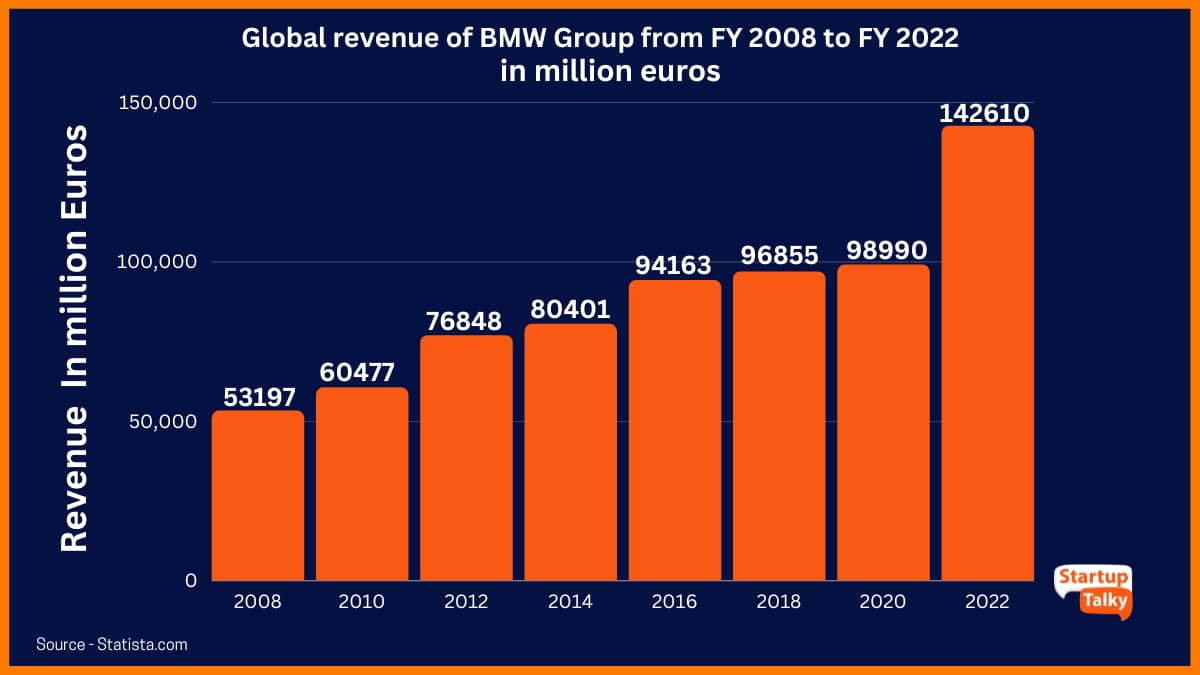Analyzing The China Market: The Experiences Of BMW, Porsche, And Competitors

Table of Contents
BMW's Dominance and Challenges in the China Market
BMW has established a significant presence in China, but maintaining its position requires continuous adaptation.
Localized Production and Model Adaptation
BMW's early investment in local production facilities has been crucial to its success. This has allowed them to:
- Reduce costs: By manufacturing vehicles locally, BMW avoids high import tariffs and transportation costs.
- Respond quickly to market demands: Local production enables faster delivery times and better responsiveness to changing consumer preferences.
- Tailor models: BMW has successfully adapted its models to meet specific Chinese consumer preferences, such as offering longer wheelbases in some models to maximize rear passenger space, a highly valued feature in the Chinese market. They also incorporate features specific to Chinese consumer tastes.
However, balancing global brand identity with local needs presents ongoing challenges. Maintaining consistent quality across different production facilities and adapting designs without compromising the core BMW brand image are key considerations.
Marketing and Branding Strategies in China
BMW’s marketing approach in China is highly sophisticated and leverages digital channels effectively:
- Digital marketing dominance: BMW invests heavily in digital marketing, including social media campaigns on platforms like WeChat and Weibo, reaching a vast audience.
- Influencer marketing: Collaborations with Chinese celebrities and key opinion leaders (KOLs) help build brand awareness and credibility.
- Experiential marketing: BMW engages consumers through events and driving experiences, fostering brand loyalty and creating a strong community.
This multi-pronged strategy has helped BMW cultivate a strong brand image and cultivate lasting customer relationships.
Competition and Market Share
BMW faces stiff competition in China from both domestic and international brands. A China market analysis reveals:
- Intense competition: The Chinese market is fiercely competitive, with established international players and rapidly growing domestic brands vying for market share.
- Competitive advantages: BMW's strong brand reputation, established dealer network, and technologically advanced vehicles are key competitive advantages.
- Vulnerabilities: Maintaining market share requires constant innovation and adaptation to meet the evolving preferences of Chinese consumers and address the competitive pressures.
Porsche's Luxury Niche and Growth Strategy in China
Porsche has successfully targeted the high-end consumer segment in China, leveraging its brand prestige and exclusivity.
Targeting the High-End Consumer Segment
Porsche's focus on luxury and performance resonates with the growing affluent Chinese consumer base:
- Exclusivity: Maintaining a strong brand image and perceived value is crucial for Porsche's success in China.
- Catering to affluent consumers: Porsche's vehicles and services are designed to appeal to the discerning tastes and high expectations of China's wealthy consumers.
- Prestige: The brand’s association with status and success is carefully cultivated.
Digital Marketing and Customer Relationship Management (CRM)
Porsche utilizes advanced digital strategies and CRM to engage with its target audience:
- Online sales: Porsche leverages online platforms for sales and customer engagement, providing a convenient and personalized experience.
- Personalized customer experience: Porsche strives to build strong relationships with individual customers, offering tailored services and experiences.
- Data-driven marketing: Utilizing data analytics to understand consumer preferences and optimize marketing campaigns is key to Porsche's success.
Expansion and Infrastructure Development
Porsche's investment in infrastructure is vital for maintaining its brand image and customer satisfaction:
- Dealership network: A comprehensive network of dealerships and service centers provides convenient access for customers across China.
- After-sales service: Porsche places a strong emphasis on providing exceptional after-sales service, ensuring customer satisfaction and loyalty.
- Customer experience: A seamless and positive customer experience is paramount to maintaining Porsche's high-end brand positioning.
Comparative Analysis of Other Competitors' Strategies
Analyzing the strategies of other automakers provides further insight into the complexities of the Chinese market.
Success Stories of Other International Brands
Several international brands have achieved success in China by adopting effective strategies:
- Localization: Adapting products and marketing to meet local preferences is crucial.
- Partnerships: Collaborations with local businesses can provide valuable market insights and access.
- Innovation: Introducing cutting-edge technologies and features appeals to tech-savvy Chinese consumers.
Challenges Faced by International Automakers
Navigating the Chinese market presents significant challenges for international automakers:
- Regulatory hurdles: Understanding and complying with complex regulations is essential.
- Intense domestic competition: The rapid growth of domestic brands presents significant competition.
- Supply chain complexities: Managing logistics and supply chains in a large and diverse market can be challenging.
The Rise of Chinese Domestic Automakers
The emergence of strong domestic brands like BYD, NIO, and Xpeng is transforming the market:
- Technological advancements: Domestic brands are making rapid advancements in electric vehicle (EV) technology.
- Competitive pricing: Domestic brands often offer competitive pricing compared to international players.
- Understanding local preferences: Domestic brands possess a deep understanding of the local market and consumer preferences.
Conclusion
This China market analysis reveals that success in this dynamic environment requires a multifaceted approach. Companies like BMW and Porsche have demonstrated the importance of localization, targeted marketing, and a strong commitment to customer service. However, the rise of domestic brands presents a significant challenge. To thrive, international automakers must continuously adapt, innovate, and understand the evolving needs and preferences of Chinese consumers. Conducting your own thorough China market analysis is crucial for future success in this vital region. Begin your own in-depth analysis of the China market today to capitalize on its potential.

Featured Posts
-
 Yankees Smash Record With 9 Home Runs Judges 3 Hrs Power Game Two Of 2025
Apr 23, 2025
Yankees Smash Record With 9 Home Runs Judges 3 Hrs Power Game Two Of 2025
Apr 23, 2025 -
 Pazartesi Dizileri 7 Nisan Tam Program Listesi
Apr 23, 2025
Pazartesi Dizileri 7 Nisan Tam Program Listesi
Apr 23, 2025 -
 Brewers Set New Record 9 Stolen Bases In Single Game
Apr 23, 2025
Brewers Set New Record 9 Stolen Bases In Single Game
Apr 23, 2025 -
 Dfb Und Bvb Adeyemi Glaenzt In Dortmund
Apr 23, 2025
Dfb Und Bvb Adeyemi Glaenzt In Dortmund
Apr 23, 2025 -
 V Mware Costs To Soar 1 050 At And Ts Concerns Over Broadcoms Price Hike
Apr 23, 2025
V Mware Costs To Soar 1 050 At And Ts Concerns Over Broadcoms Price Hike
Apr 23, 2025
